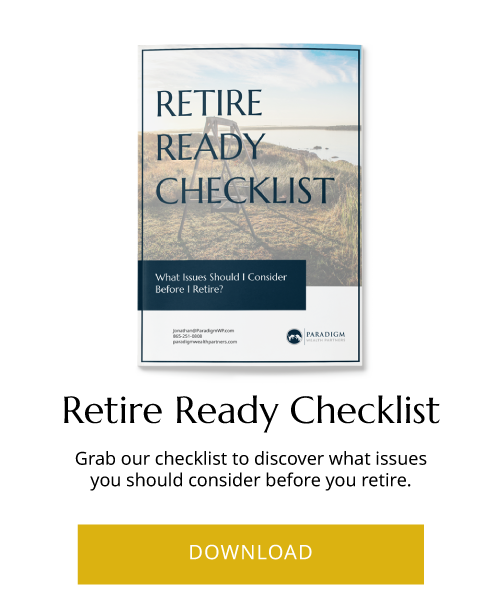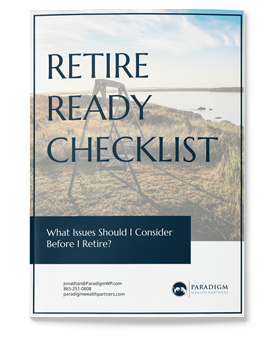What Is The 4% Rule?
There are a lot of rules of thumb you can use in personal finance when it’s not possible to predict the future and know an exact number. Like when you’re planning for retirement. There are a lot of unknown variables; how much will your yearly expenses be, what will tax rates be, and what will inflation be? One of those rules of thumb is the 4% Rule.
William P. Bengen and the 4% Rule
The 4% Rule was created by William P. Bengen, CERTIFIED FINANCIAL PLANNERTM Professional (CFP®). Bengen’s research showed that if your retirement portfolio was at least 50% stocks and the rest bonds, you could safely withdraw an inflation-adjusted 4% every year for 30 years for living expenses without ever eating into the principal.
Bengen tested the rule using a simulator against some of the worst markets in American history, and the result was always the same; 4% was a safe withdrawal rate. The data was initially published in 1994.
In 1998, the Trinity Study used the same data and similar simulations and confirmed Bengen’s rule.
Bengen retired in 2013 and is considered one of the most influential financial advisors in modern American history.
The 4% Rule in Action
The 4% Rule tells you how much you can spend each year of your retirement. But how do you calculate the nest egg of which you’ll be spending 4%? Another good personal finance rule of thumb is the Rule of 25.
Conventional wisdom suggests that you’ll need 80% of your pre-retirement salary during retirement. To get your “Big Number,” your retirement number, multiply that amount by 25. Here’s an example:
● Your salary as you near retirement is $100,000 per year
● 80% of $100,000 is $80,000
● $80,000 x 25 = $2,000,000
Your retirement number is $2 million. You retire and start drawing down. Now is the time to put the 4% Rule into action.
● Year 1: $2,000,000 x 0.04 is $80,0000
You withdraw the same 4% plus an additional amount for each year of retirement to cover inflation. Inflation is much higher now, but historically, inflation has been lower. So we’ll assume an average rate of 3% per year for our calculation.
● Year 2: $80,000 x 1.03 = $81,600
● Year 3: $81,600 x 1.03 = $84,048
● Year 4: $84,048 x 1.03 = $86,569
And so on for the duration of your retirement. Each inflation-adjusted amount may be more than 4% of your remaining portfolio depending on the performance of your investments but don’t recalculate the 4%. Your 4% drawdown is calculated only once during the first year of your retirement.
Shortcomings of the 4% Rule
The 4% Rule is nearly 30 years old. Is it still relevant? The answer is “Yes!” But there are now and always were some issues with the 4% Rule. It’s not so much the rule itself that is the problem; rather, some people’s too literal interpretation of the word “Rule.”
Remember at the top of the article when we talked about rules of thumb? The 4% Rule is a rule of thumb, not a hard and fast rule that will work for everyone no matter the circumstances.
Some people find 4% to be too conservative, not allowing people who have worked hard their whole lives to enjoy the fruits of their labor. You can’t take it with you, and people should enjoy spending the money they worked hard to earn.
Others find the 4% Rule is not conservative enough, particularly for those who retire much earlier than 65. If you retire at 65 and live an average life expectancy of around 80, your money only needs to last for 15 years. But if you retire at 50, that stretches to 30 years. However, we live longer due to advances in healthcare, so it might be a good measure to plan for a longer life expectancy.
The 4% Rule may also be too high a withdrawal rate for retirees who have rigid expenses. If there was an extended bear market, they don’t have much flexibility to reduce their spending temporarily. Nor does the rule account for those who pay high investing fees or high tax rates in the future.
The 4% Rule may be too simplistic for those retiring during a volatile market, and other strategies must be considered.
Alternatives to the 4% Rule
Given that the 4% Rule isn’t ideal for everyone, there are some alternatives to consider and discuss with your financial advisor.
Bucketing Strategy
The Bucketing Strategy splits your retirement portfolio into three separate buckets, and each has a different time horizon, asset allocation, objectives, and risk level. This strategy allows you to draw down some assets for living expenses while allowing others to continue to grow for your future needs.
Guardrails
Guardrails allow more flexibility to respond to market conditions. Take an initial snapshot value of your account. You withdraw 4.5% during your first year of retirement.
● If the account value decreases by 20%, reduce the withdrawal by 10%, this is known as the Capital Preservation Rule.
● If the withdrawal percentage has increased by 20% or more, increase the withdrawal rate by 10%, this is known as the Prosperity Rule.
● If the account balance is within 20% up or down of the initial account value, then maintain the initial withdrawal rate.
One Size Doesn’t Fit All
This blog is for general information only and are not intended to provide specific advice or recommendations for any individual. In the case of the 4% Rule, one size doesn’t fit all and maybe doesn’t even fit most. But as a rule of thumb, a guideline for retirement planning when you can’t predict the future, the 4% Rule is still a helpful tool.



